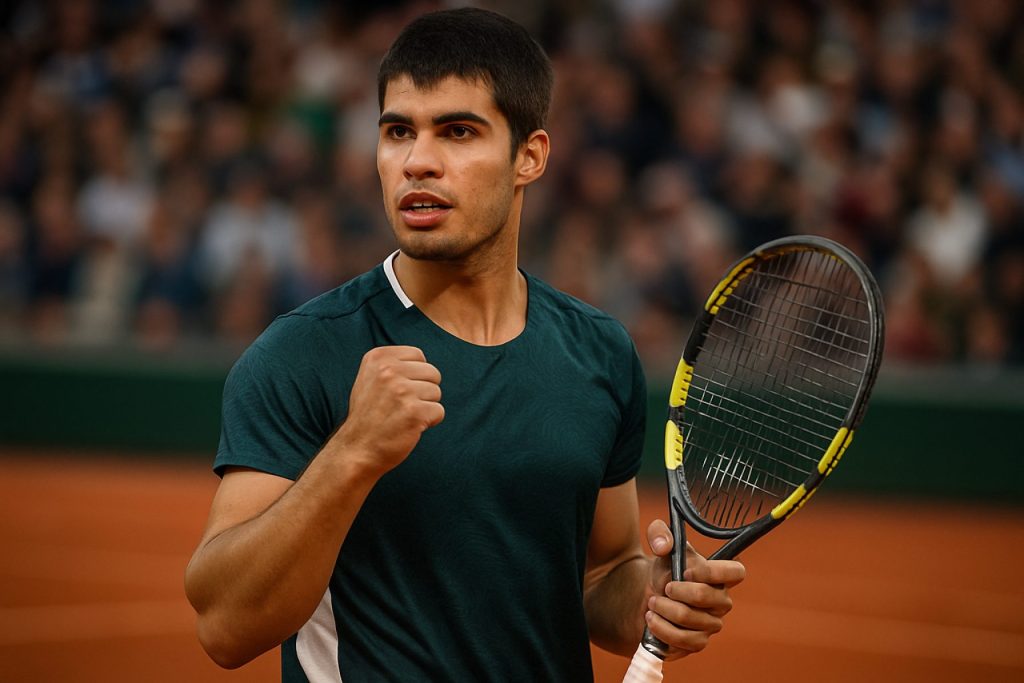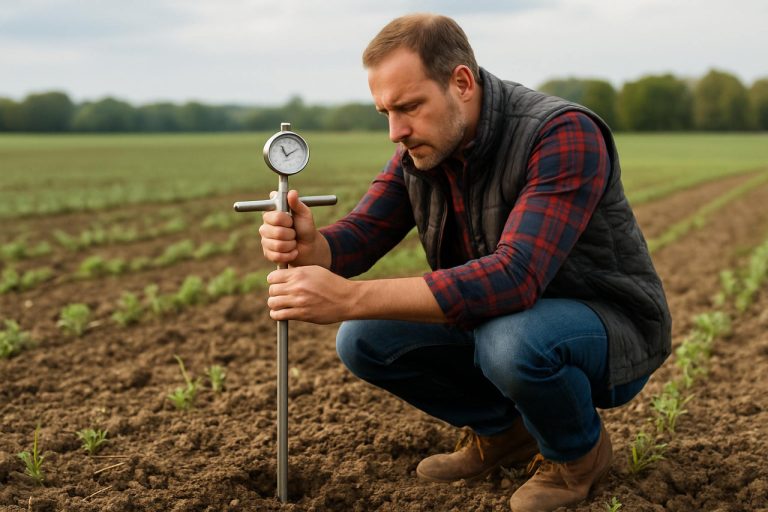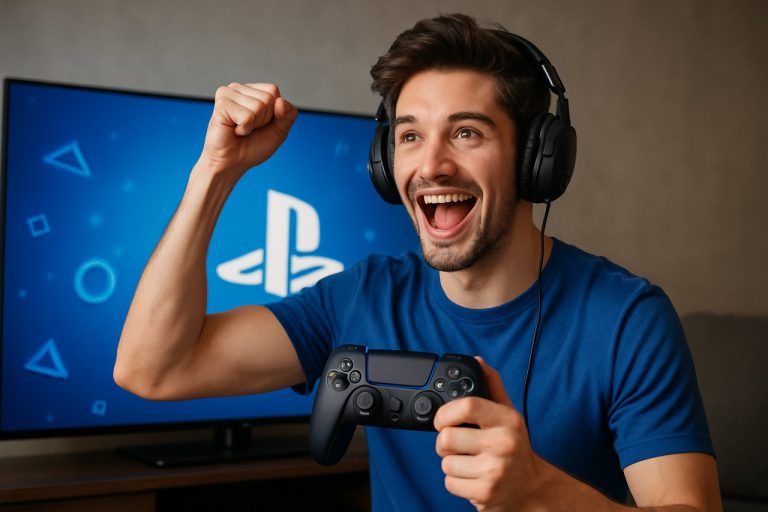
- Katie Volynets, a leading young American tennis player, advances to the French Open’s second round, demonstrating both resilience and experience on clay courts.
- Her opponent, Joanna Garland, navigates her Grand Slam debut as a determined qualifier, facing the high-pressure Parisian arena for the first time.
- The contrasting backgrounds—Volynets’ Grand Slam poise versus Garland’s raw ambition—highlight the unpredictable nature of major tennis tournaments.
- Success on Roland Garros’ clay demands patience, strategic rallies, and mental toughness, qualities that give Volynets an advantage.
- Fans can watch the match via streaming platforms, witnessing a dynamic clash that represents both tennis experience and the pursuit of new dreams.
Red dust swirls across the legendary clay courts of Roland Garros as Katie Volynets, one of America’s rising tennis prospects, prepares to carve her mark deeper into the stone of Grand Slam history. Crowds filtering into the Parisian arena sense an undercurrent of anticipation. Volynets, fresh from a remarkable run that saw her seize victory in six of her last nine singles battles, now faces a defining challenge against Joanna Garland—a persistent qualifier making her main draw debut at the French Open.
The contrast between these two athletes is striking. Volynets, steady and undeterred, carries the authority of experience, having weathered the crucible of Grand Slam tennis multiple times. This is her third time in four years reaching the threshold of the French Open’s coveted second round. She juggles nerves and expectations as deftly as a drop shot on clay, her poise honed by years of high-stakes matches.
Garland, on the other side of the net, represents unpredictability. The Taiwanese player’s journey through qualifying rounds reflects raw determination and hunger, but also the daunting reality of entering tennis’ grandest stages for the first time. Thousands of eyes, camera flashes, and the roaring Parisian crowd—a grand slam debut can rattle even the sturdiest resolve.
Clay courts demand finesse and patience, rewarding those who build points with tenacity; both women must master long rallies and subtle tactics. Yet, Volynets’ game radiates an edge: her movement is precise, her backhand a needle threading through the clay, her forehand a statement of intent. Grand Slam experience, accumulated across matches brimming with pressure, offers her an invisible shield against debut jitters.
Watching global coverage on discovery+ in the UK or Max in the US, spectators will see more than just a match. Katie Volynets stands as a symbol of America’s youthful tennis renaissance, pushing beyond boundaries, embodying both grit and grace. For Garland, every game is an education, each rally a step toward possibility.
The key takeaway: In the theatre of Grand Slam tennis, experience crafts resilience, but dreams can ignite without warning. Volynets enters as the clear favorite, drawing support from both recent triumphs and seasoned composure. But the clay in Paris—fickle, testing, unpredictable—makes room for surprises.
Tonight, beneath the lights, fans will witness more than a contest of serves and volleys; they’ll see the promise of rising stars and the relentless pursuit of sporting greatness. The Parisian stage is set. The drama is inevitable.
From Underdog to Ace: How Katie Volynets Is Shaping the Future of American Tennis at Roland Garros
Katie Volynets vs. Joanna Garland: Beyond the First Serve
The 2024 French Open at Roland Garros is more than just a clash between Katie Volynets and Joanna Garland—it’s a showcase of emerging talent, national legacy, and the unpredictable nature of clay court tennis. Let’s dive into essential facts, trends, and expert insights that go well beyond the source article, with useful tips for fans, aspiring players, and tennis enthusiasts.
—
Expanded Facts & In-Depth Insights
1. Katie Volynets: Credentials and Career Momentum
– At just 22 years old, Katie Volynets is already a three-time Grand Slam main draw participant. She made her Grand Slam main draw debut at the 2021 US Open and reached the third round of the 2023 Australian Open, marking her as a top American women’s prospect (WTA source).
– Volynets is notable for her adaptability on multiple surfaces, but her recent wins on clay indicate growing specialization. According to her WTA profile, she has a high first-serve percentage and a reliable backhand, essential for the long rallies common on slow clay surfaces.
– She is currently ranked within the WTA Top 70, a significant milestone for young American players looking to reclaim prominence on the women’s circuit—a mantle previously held by Serena Williams and Venus Williams.
2. Joanna Garland: Road to Roland Garros
– Garland, representing Chinese Taipei, is making her main draw debut at a Grand Slam. She is part of a growing contingent of rising Asian tennis stars, inspired by players like Hsieh Su-Wei and Naomi Osaka (though Osaka represents Japan).
– A strong baseline player, Garland’s performance during the qualifying rounds demonstrates her persistence and mental toughness, even if she is relatively untested on the Grand Slam stage.
3. Clay Court Strategy: What Sets Roland Garros Apart
– The French Open is notoriously difficult for newcomers. Clay favors endurance, patience, and tactical play; matches often exceed 2 hours and can include rallies of 20 shots or more.
– Players must master the art of sliding, as well as topspin-heavy groundstrokes and drop shots to outmaneuver opponents—a style in which seasoned clay specialists like Rafael Nadal have excelled.
4. Real-World Use Case: What Can Recreational Players Learn?
– If you want to improve your own clay court game, try these steps:
1. Focus on footwork: Practice sliding into shots safely.
2. Build up endurance with interval training.
3. Add more topspin to your groundstrokes for better control and bounce.
4. Drill drop shots and lobs to disrupt rhythm.
– Life Hack: Use a ball machine set to slower speeds to simulate clay rallies and improve consistency.
5. Market Forecasts & Industry Trends
– American women’s tennis is poised for a renaissance, with Volynets, Coco Gauff, and Amanda Anisimova leading a new wave. According to Tennis Channel analysts, U.S. WTA player depth is the strongest it’s been in a decade.
– Asia-Pacific players are increasingly making their mark, reflecting broader globalization in tennis.
6. Reviews & Comparisons
– Volynets’ rise is often compared to that of Sofia Kenin and Jessica Pegula, both of whom have translated ITF success into WTA breakthroughs.
– Joanna Garland’s trajectory mirrors other qualifiers who, like Emma Raducanu, have made unexpected deep runs at majors.
7. Controversies & Limitations
– The transition from ITF to WTA events is not always smooth; young prospects often struggle with the physical and psychological demands of the Grand Slam environment.
– Some critics argue that the heavy Tour schedule can lead to burnout and injury (see International Tennis Federation discussions).
8. Features, Specs & Pricing: Fan Experience
– Major matches are available in 4K streaming on discovery+ in the UK and Max in the US.
– Tickets for Roland Garros range from €20 for early rounds to over €200 for finals weekend. Online viewing packages vary by region.
9. Security & Sustainability
– Roland Garros is advancing sustainability—using recycled clay, renewable energy, and advanced crowd-control security tech, in response to increasing environmental and safety concerns at global sporting events.
10. Pros & Cons Overview
Volynets
– Pros: Grand Slam experience, strong rally tolerance, high mobility.
– Cons: Limited clay court legacy compared to European rivals, still developing offensive arsenal.
Garland
– Pros: Strong mental game, fresh off qualifying (high match fitness).
– Cons: Experience gap in majors, facing crowd and media pressure.
—
Most Pressing Reader Questions, Answered
Q1: Can Katie Volynets Be America’s Next Grand Slam Champion?
– Experts say she has all the tools: work ethic, composure, adaptability. Consistency at Slams, plus a signature win against a top-10 player, would elevate her status further (see WTA coach interviews).
Q2: How Likely Is an Upset by Garland?
– While possible, odds remain low—historically, Grand Slam rookies win just 18% of their first-round matches against seeded or higher-ranked opponents (Statista, 2022 data).
Q3: What’s Unique About Watching the French Open?
– Beyond tennis, viewers enjoy Parisian culture, iconic settings (like Court Philippe-Chatrier), and a festive global atmosphere. Exclusive interviews and analysis are available through discovery+ and Max.
—
Actionable Recommendations for Tennis Fans:
– Track player progress and match stats on the official Roland Garros site or the WTA Tour portal.
– Try local clay courts to experience firsthand what pros endure.
– Watch post-match interviews for strategy insight and player mindset cues.
—
Quick Tips for Aspiring Players:
– Master basics—serve consistency and return accuracy are key on clay.
– Develop a pre-match focus routine to manage nerves like Volynets.
– Study matches of past clay court legends such as Chris Evert and Rafael Nadal for strategic inspiration.
For more on the evolving tennis landscape, visit WTA official and Roland Garros.
—
In Summary:
Katie Volynets’ campaign at Roland Garros is more than just a promising run—it’s the unfolding story of a new generation challenging the status quo on clay. Experience may give her the edge today, but the French Open’s red dust is where legends are sometimes born overnight. Prepare for high drama, surprise breakthroughs, and the continued resurgence of American tennis.



